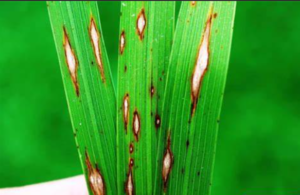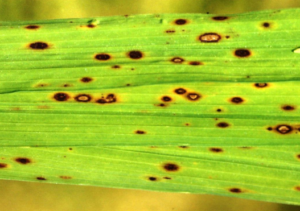Tungro Disease:
Causal organism:
Rice tungro bacilli from virus (RTBV) AND Rice tungro spherical virus (RTSV).
Symptoms:
· Infected plant show discolouration of leaves.
· This discolouration is yellow and start from the tip of the leaf. Then extend towards the base of the leaf.
· Infected plants remain stunted have less flowering, sterile or poor grain filling. (May produce rust colour spots).
· Infected plant produces less tillers.
· This disease may occur on any stage of rice crop (Incidence of disease in high vegetative stage).

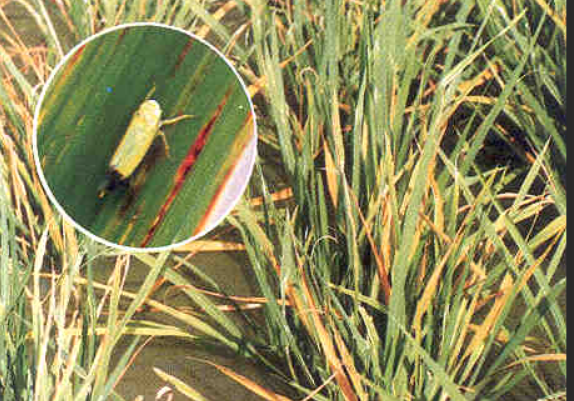
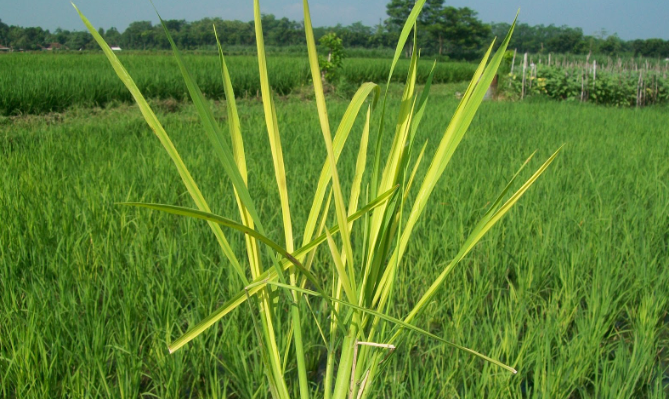
Identification:
· Collect the diseased sample in early morning .
· Cut 10cm of leaf from tip.
· Dip the leaf in solution of 2g iodine and 10gm of potassium iodine in 100ml of water for 15 minutes.
· Leaf will develop dark blue coloured strikes.
Favourable condition:
· Temperature: 25-34 degree.
· Relative humidity: More than 70%
· 1 less recommended dose of nitrogenous fertilizer.
Disease cycle:
Perennation:
· through the weeds and plant debris and seeds also.
Primary infection:
· From weed hosts and plant debris or seeds.
Secondary infection:
· Through the spread of bacterial oozes with the help of irrigation water from on plant to another plant.
Diagram of Tungro disease cycle:
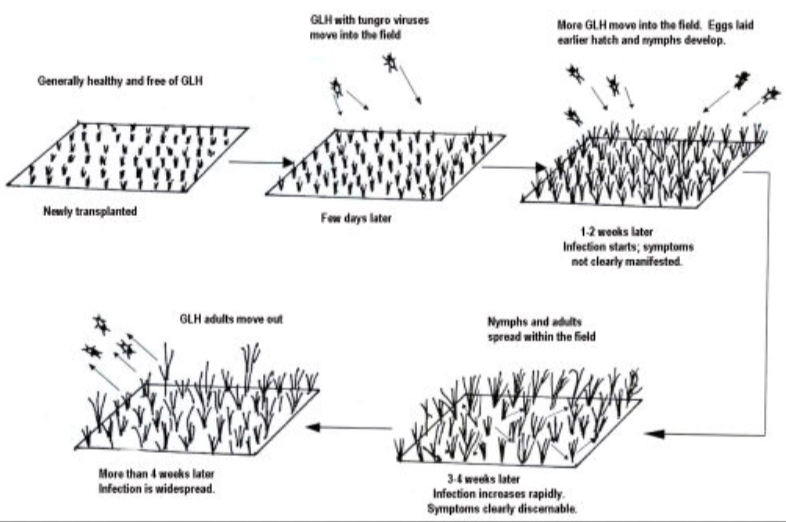
Management:
· Grow tungro or leafhopper resistant varieties. This is the most economical means of managing the disease.
There are tungro- resistant varieties available for the Philippines, Malaysia, Indonesia, India, Bangladesh.
Contact your local agriculture office for up-to-date lists of varieties available.
· Adjusting planting time to when green leafhopper is not in season or abundant.
· Practice synchronous planting with surrounding farms.
· Delayed late planting, relative to the average data in a given area, makes the field susceptible for Tungro.
· Late-planted fields also pose a risk to early planting in the next season.
· Plow infected stubbles immediately after harvest to reduce inoculum sources and destroy the eggs and breeding sites of green leaf hopper.


